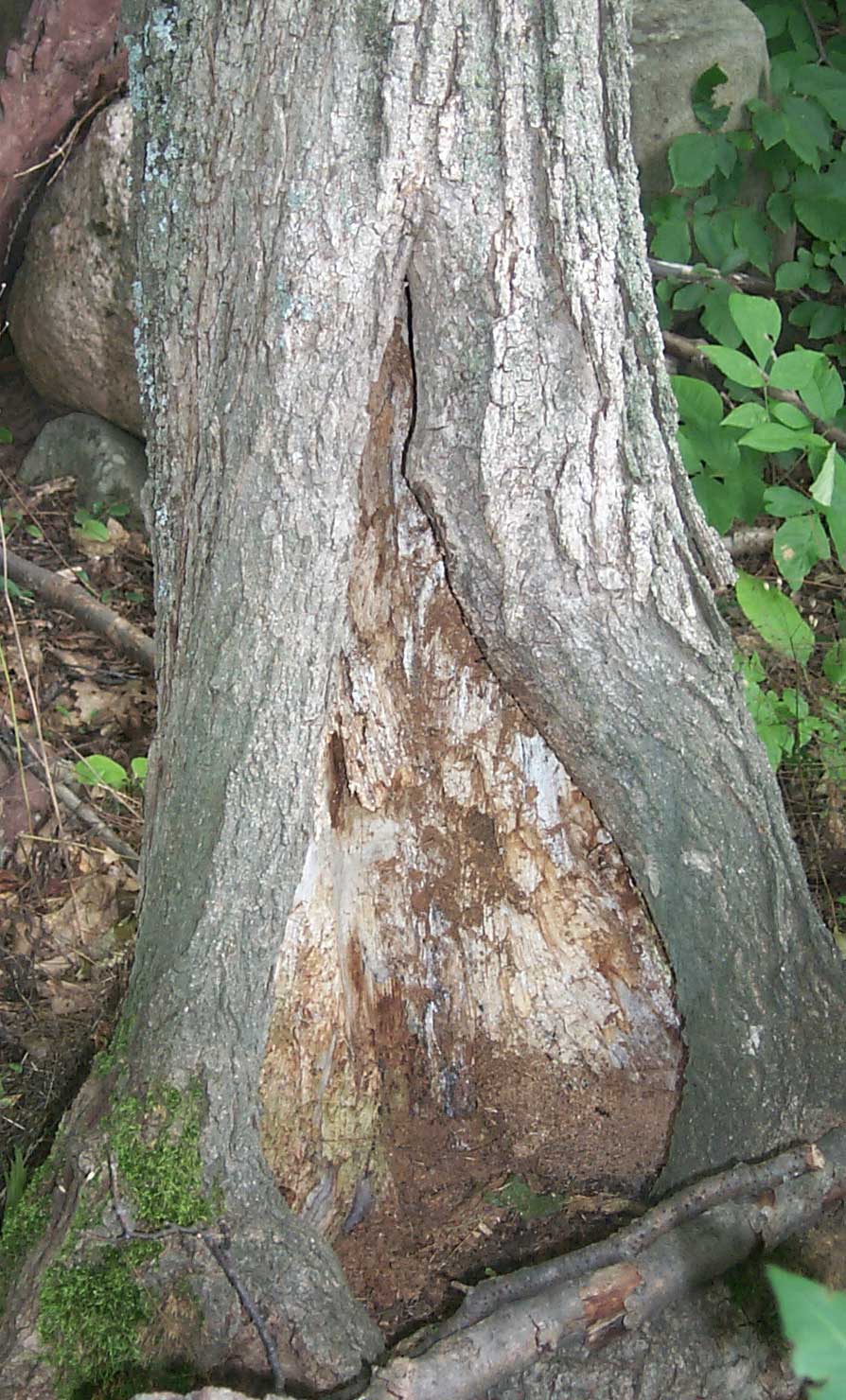
| Home |
| Tutorial |
| Photo Gallery |
| List of Defects |
| Links |
| Bark Distortion |
| Bird Peck |
| Bumps |
| Burls |
| Butt Scars |
| Butt Swells |
| Cankers |
| Conks |
| Epicormic Branches |
| Flanges |
| Flutes |
| Forks |
| Galls |
| Holes |
| Knots |
| Lesions |
| Limbs |
| Ring Shake |
| Rot |
| Seams |
| Soak |
| Splits |
| Wounds |
Significance: Since severe rot is commonly associated with butt scars, the first log should be cut far enough above the butt scar to ensure that the expanse of rot occupies no more than 50% of the butt-end area of the log.
In veneer logs, a butt scar is always a log grade defect. If the tree stem reveals veneer log quality above the scar and its attendant swelling, the log should be bucked at this point to make a log with the least possible taper and to reach a point where the interior rot will not prevent chucking. More of this rot can be admitted in a veneer log to be sawed into flitches for slicing.
In factory logs, a butt scar of recent origin with a limited volume of rotten or stained wood often is left on the log. The area involved is a grading defect in factory logs even though a scale deduction always is made for. Also, if the area in rotten or stained wood exceeds 50% of the butt-end area of the log, this section of the log must be entirely scaled out for a distance up to the point where the condition decreases to 50%. This rule applies specifically to factory lumber logs.
In construction logs, a butt scar is disregarded if it and the associated rotten wood are superficial and do not extend into the included tie or timber.
In standing trees, butt scar and accompanying rot is ignored if the logs can be cut to meet the minimum specifications for the log class. Open butt scars are easily observed, and the degree of damage is measured to acceptable accuracy. However, during the first growing season after the damage, the butt scar begins to heal. Callus tissue forms along the margins of the scar, and the initial opening closes each year in proportion to the volume of growth during the growing season. This closing process continues until the opening closes fully, and a seam or triangular disturbance in the bark pattern remains for several years. If the tree continues to stand and grow after this condition is reached, annual growth rings develop and a close to normal bark pattern is reestablished.
Butt scars that heal over are good illustrations of several log defects that, when they become substantially overgrown, always lose part and frequently all of their degrading effect. Of course, interior rot will be discovered when the tree is cut. It can be discovered in the standing tree by extracting an increment boring or by using a shigometer. A practical, but not wholly reliable way to discover the rot or hollow is to tap lightly but firmly (not beat) on the surface of the tree with the head of an ax. The sounds should indicate whether there is rot or hollow. Practice helps increase the accuracy of the results of this method to detect interior rot or hollow.

